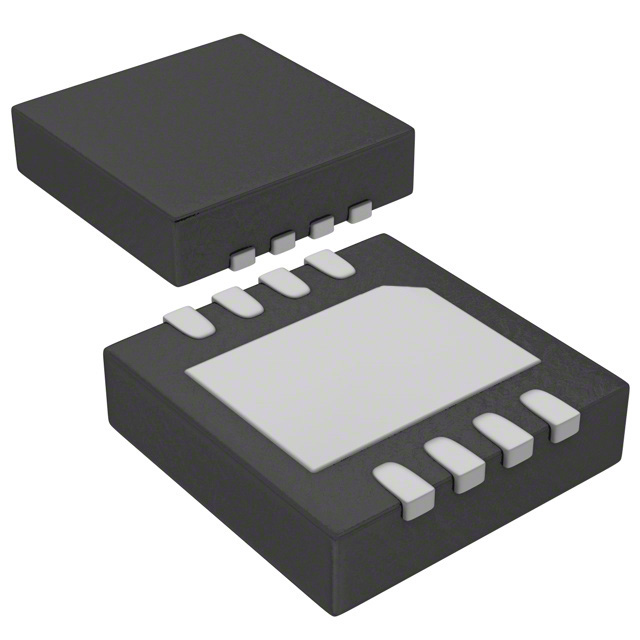Viz Specifikace pro podrobnosti o produktu.

ADA4528-2ACPZ-R7
Product Overview
Category: Integrated Circuit (IC)
Use: The ADA4528-2ACPZ-R7 is a dual operational amplifier designed for precision applications. It offers low offset voltage, low input bias current, and low noise, making it suitable for a wide range of precision measurement and signal conditioning applications.
Characteristics: - Low offset voltage: The ADA4528-2ACPZ-R7 has a maximum offset voltage of 50 µV, ensuring accurate amplification of small signals. - Low input bias current: With a maximum input bias current of 1 nA, the operational amplifier minimizes the impact of input current on the circuit performance. - Low noise: The device features a low noise density of 10 nV/√Hz, enabling precise amplification of weak signals.
Package: The ADA4528-2ACPZ-R7 comes in a compact LFCSP package, which stands for Lead Frame Chip Scale Package. This package offers excellent thermal performance and allows for easy integration into space-constrained designs.
Essence: The essence of the ADA4528-2ACPZ-R7 lies in its ability to provide high precision amplification with low offset voltage, low input bias current, and low noise characteristics.
Packaging/Quantity: The ADA4528-2ACPZ-R7 is typically available in tape and reel packaging, with a quantity of 2500 units per reel.
Specifications
- Supply Voltage Range: ±2.25 V to ±18 V
- Input Offset Voltage: 50 µV (maximum)
- Input Bias Current: 1 nA (maximum)
- Noise Density: 10 nV/√Hz
- Gain Bandwidth Product: 10 MHz
- Slew Rate: 5 V/µs
- Operating Temperature Range: -40°C to +125°C
Detailed Pin Configuration
The ADA4528-2ACPZ-R7 has a total of 10 pins, with each operational amplifier having 5 pins. The pin configuration is as follows:
- OUT1: Output of Operational Amplifier 1
- IN-1: Inverting Input of Operational Amplifier 1
- IN+1: Non-Inverting Input of Operational Amplifier 1
- V-: Negative Power Supply Terminal
- NC: No Connection
- V+: Positive Power Supply Terminal
- IN+2: Non-Inverting Input of Operational Amplifier 2
- IN-2: Inverting Input of Operational Amplifier 2
- OUT2: Output of Operational Amplifier 2
- NC: No Connection
Functional Features
- Dual Operational Amplifiers: The ADA4528-2ACPZ-R7 consists of two independent operational amplifiers in a single package, allowing for simultaneous amplification of two different signals.
- Rail-to-Rail Inputs and Outputs: The device supports rail-to-rail input and output voltage range, enabling accurate amplification of signals close to the supply rails.
- Unity-Gain Stable: The operational amplifiers are unity-gain stable, ensuring stability even when used in applications with a gain of 1.
- Low Power Consumption: The ADA4528-2ACPZ-R7 operates at low power, making it suitable for battery-powered applications.
Advantages and Disadvantages
Advantages: - High precision amplification - Low offset voltage and input bias current - Low noise performance - Rail-to-rail inputs and outputs - Compact package size
Disadvantages: - Limited bandwidth compared to some other operational amplifiers - Higher cost compared to general-purpose operational amplifiers
Working Principles
The ADA4528-2ACPZ-R7 operates based on the principles of operational amplifiers. It amplifies the voltage difference between its inverting and non-inverting inputs by a factor determined by the feedback network connected to its output. The device utilizes internal compensation techniques to ensure stability and minimize phase shift.
Detailed Application Field Plans
The ADA4528-2ACPZ-R7 finds applications in various fields that require precision amplification, such as: - Sensor signal conditioning - Medical instrumentation - Data acquisition systems - Audio amplification - Industrial control systems
Detailed and Complete Alternative Models
- AD8628: Precision, Low Noise Operational Amplifier
- LT1677: Low Noise, Rail-to-Rail Output Operational Amplifier
- MCP6022: Dual Rail-to-Rail Input/Output Operational Amplifier
- OPA2188: Precision, Low Noise Operational Amplifier
These alternative models offer similar characteristics and can be considered as alternatives to the ADA4528-2ACPZ-R7 depending on specific application requirements.
Word count: 560 words
Seznam 10 běžných otázek a odpovědí souvisejících s aplikací ADA4528-2ACPZ-R7 v technických řešeních
Sure! Here are 10 common questions and answers related to the application of ADA4528-2ACPZ-R7 in technical solutions:
Q: What is ADA4528-2ACPZ-R7? A: ADA4528-2ACPZ-R7 is a precision operational amplifier (op-amp) manufactured by Analog Devices.
Q: What are the key features of ADA4528-2ACPZ-R7? A: Some key features include low offset voltage, low input bias current, low noise, wide bandwidth, and rail-to-rail output swing.
Q: What is the typical supply voltage range for ADA4528-2ACPZ-R7? A: The typical supply voltage range is from ±2.25V to ±18V.
Q: What is the input offset voltage of ADA4528-2ACPZ-R7? A: The input offset voltage is typically around 50µV.
Q: Can ADA4528-2ACPZ-R7 operate in single-supply applications? A: Yes, ADA4528-2ACPZ-R7 can operate in both single-supply and dual-supply applications.
Q: What is the maximum output current of ADA4528-2ACPZ-R7? A: The maximum output current is typically around 30mA.
Q: Is ADA4528-2ACPZ-R7 suitable for low-power applications? A: Yes, ADA4528-2ACPZ-R7 has low power consumption, making it suitable for low-power applications.
Q: Can ADA4528-2ACPZ-R7 be used in precision measurement systems? A: Yes, ADA4528-2ACPZ-R7's low offset voltage and low noise make it suitable for precision measurement systems.
Q: What is the temperature range for ADA4528-2ACPZ-R7? A: The operating temperature range is typically from -40°C to +125°C.
Q: Can ADA4528-2ACPZ-R7 be used in audio applications? A: Yes, ADA4528-2ACPZ-R7 can be used in audio applications due to its low noise and wide bandwidth characteristics.
Please note that these answers are general and may vary depending on specific application requirements and conditions. It is always recommended to refer to the datasheet and consult with Analog Devices or technical experts for precise information.

